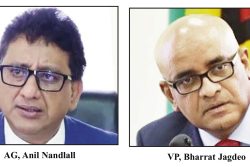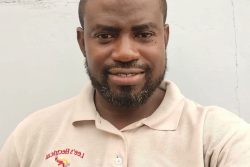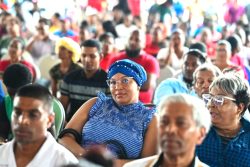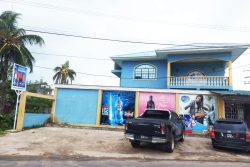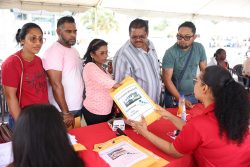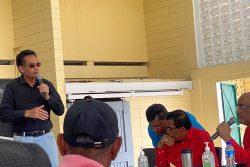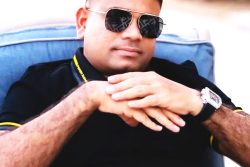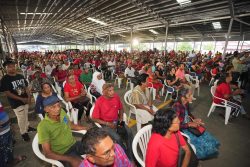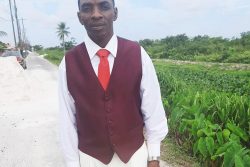{This column is in commemoration of Carifesta which first took place in Guyana in 1972.}
One of the regrets of my life is that I don’t have more artistic talent. Tell me to draw something and you’ll get stick figures. Compel me to sing and rain might start falling. I love the arts though- whether it’s live music, paintings, dance, etc- there is something about art that soothes and calms the soul. (That’s not to say however that art cannot or should not be provocative or shocking- that is also appreciated for engaging the intellect and senses in another way.) Art has long been a part of human society- remember those prehistoric cave paintings? Aside from just being a form of self-expression however, art also has significant positive effects on human health and wellbeing.
Art- specifically musical engagement, visual art therapy, movement-based creative expression, and expressive writing- has been shown to have significant therapeutic effects in people suffering from a variety of illnesses such as heart disease, cancer, HIV, chronic pain, depression, grief, and aging. Art aided healing, reduced stress, and increased wellness, as well as sped up individual’s recovery from surgery, interpersonal violence, and other trauma. Engaging with art was also shown to help relieve some of the burden that caregivers and healthcare professionals can experience.
People exposed to art therapy needed less medication, healed faster, and were discharged from hospital earlier than others. Even just passively listening to music reduced stress hormone levels in persons with cardiovascular disease. Movement-based therapy improved the cognitive functioning of elderly people. Creative writing and visual art therapy helped people better process traumatic events in their lives- from violence or abuse, to being diagnosed with a chronic, terminal, or life-threatening condition. The evidence is clear- engaging with artistic activities, either as an observer of the creative efforts of others or by making creative efforts oneself, can enhance one’s moods, emotions, and mental state while having a significant positive impact on physical health.
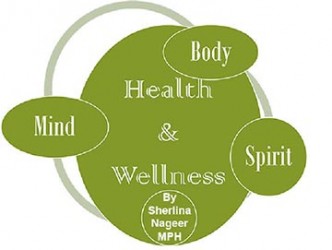 This impact cannot be overemphasized; stress and anxiety are significant contributory factors to many chronic diseases so anything that relaxes and lessens tension and increases quality of life should be embraced as a preventative health measure. (Of course, that does not negate the need for exercise, a healthy diet etc.) In fact, the World Health Organization defines health as the state of “complete physical, mental, and social well-being rather than merely the absence of disease or infirmity.” As such, promoting wellness is as important as treating or preventing disease. In environments like Guyana where there are high levels of stress, interpersonal violence, depression, suicide, mental illness and chronic disease- it is necessary to investigate all possible ways of boosting health and wellness. Art- as both therapy and prevention- offers benefits on multiple levels.
This impact cannot be overemphasized; stress and anxiety are significant contributory factors to many chronic diseases so anything that relaxes and lessens tension and increases quality of life should be embraced as a preventative health measure. (Of course, that does not negate the need for exercise, a healthy diet etc.) In fact, the World Health Organization defines health as the state of “complete physical, mental, and social well-being rather than merely the absence of disease or infirmity.” As such, promoting wellness is as important as treating or preventing disease. In environments like Guyana where there are high levels of stress, interpersonal violence, depression, suicide, mental illness and chronic disease- it is necessary to investigate all possible ways of boosting health and wellness. Art- as both therapy and prevention- offers benefits on multiple levels.
Integrating art therapy in the healthcare setting need not be prohibitively expensive- simple things like painting murals on ward walls, providing soothing music and creative movement activities to residents of the Palms and National Psychiatric Hospital, and integrating creative therapy in existing counseling practices have large rewards in terms of improving persons’ wellbeing and quality of life while being relatively easy, low-tech, and straightforward to accomplish.
Aside from therapy, art is essential for creating meaning, improving understanding of self and others, communicating ideas, and building community. These are key pillars of wellbeing and a healthy society. Engaging in artistic endeavours is one way to learn about and bond with others who may be different from you; this is crucial in multiethnic societies like ours. It is also essential to developing positive self-esteem and community pride- things we desperately need more of in Guyana today, things that promote resilience and can help prevent violence- both individually and communally. Art- because it has the capacity to engage more than one of our senses at one time- is extremely impactful and can be used to reach and educate others and communicate ideas in ways that other mediums cannot.
There will, of course, be many different definitions of what is worthy art- such debates are part of what makes the arts so stimulating. By learning to respect others’ opinions and deal with criticism, artists hone their craft as well as their social skills, becoming better able to communicate their thoughts and ideas, while simultaneously serving as inspirational examples and contributing to the national fabric. Art is also a way of reflecting on and interrogating events- both personal and broader in scope. For all these reasons, art is revolutionary.
Part of the revolutionary aspect of art is the fact that it is for everyone. Art need not continue to be seen as the province of only a talented few; there are many different avenues to explore. Storytelling- something which many Guyanese excel at- is an art form. Photography is another, which has increased in popularity with recent technological advances. Art also need not be an expensive endeavour; there are materials all around us- from natural to recycled sources. All that is needed is imagination.
There also needs to be more art in the public domain. Art is not just for the gallery or Cultural Centre; we need art in the streets of our communities, interactive and accessible to everyone. We need murals of our heroes and heroines on the storefronts, poetry readings in the park, sculptures that are more than mounds of garbage, music without a foreign accent, stories of our unique and common heritage. In short, we need art as much as we need oxygen.
We must realize the importance of art in helping to create a strong and healthy society and we must provide more opportunities for youth, in particular, to find their creative voice. We need to foster more appreciation for creative expression and to invest in and compensate cultural creatives fairly for the work they do. With more art and artists in our midst, our people and society will be happier, healthier, and more cohesive, with less need for doctors. This is soul medicine; let us create it.
Sherlina can be contacted at ssnageer@yahoo.com
